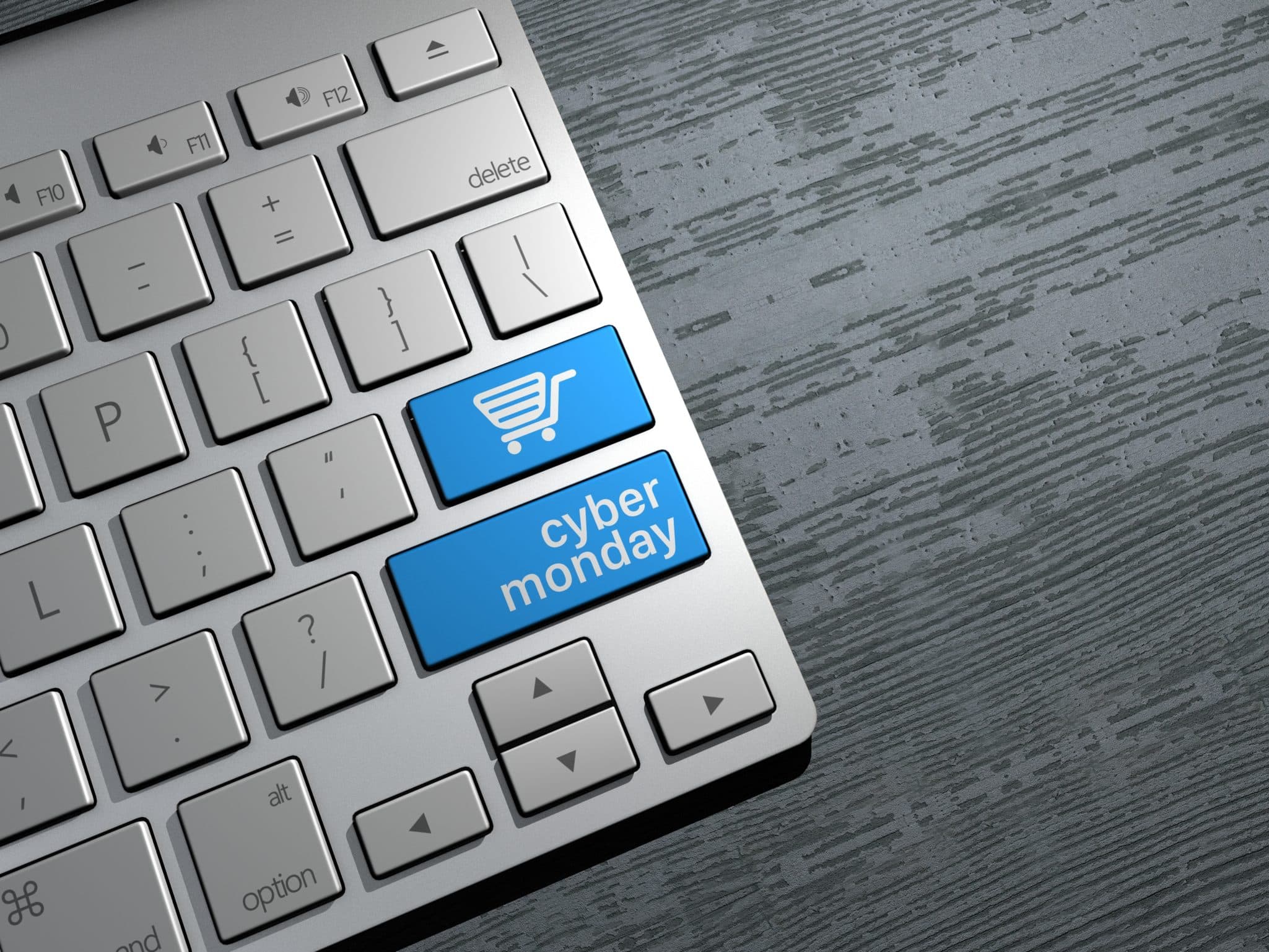Cyber Week 2022 Sales Jump 11%, But Retail Worries Remain

Retail sales jumped by nearly 11 percent, not adjusted for inflation, during this year's five-day holiday shopping period, known as Cyber Week, according to Mastercard Spending Pulse data. The Thanksgiving to Cyber Monday shopping period drew in almost 196.7 million shoppers online and in stores, up by 17 million from last year, according to the National Retail Federation. All in all, the shopping holiday rang bells of delight for shoppers and retailers.
Nominal estimates from Adobe suggested that American consumers spent $5.3 billion on Thanksgiving Day, $9.12 billion on Black Friday, and $11.3 billion on Cyber Monday. The numbers for all three days increased compared to the 2021 numbers, up by 3 percent on Thanksgiving, 2.3 percent on Black Friday, and 5.8 percent higher on Cyber Monday, not adjusted for inflation.
While the season’s deals began in October, the increased discounting during Cyber Week drew out bargain savvy shoppers who heartily indulged in retail therapy. This countered the industry’s rather pessimistic expectations and apprehensions about how 2022 Cyber Week would pan out, with concerns regarding the impact of record-high inflation and whispers of an impending recession.

What attracted customers’ wallets this year?
Toys were in strong demand this year, with sales up by 684 percent, according to Adobe. This was followed by sporting goods (up 466 percent), appliances (up 458 percent ), books (up 439 percent), jewelry (up 410 percent), electronics (up 391 percent), and computers (up 372 percent).
Customers also increasingly bought personal-use items like makeup and skincare, and luxury apparel and handbags, thanks to significant discounting.. Gains in automotive sales were modest.
Customers didn't just buy items but also showed interest in the experience economy. Dining out with friends and family, for example, increased by 23.3 percent compared to the same period last year.
Despite all the positive shopping numbers, there are apprehensions of a short-lived uptick, with the possibility of plummeting demand once attractive bargains are withdrawn.
Key shopping trends from Holiday Shopping Week 2022
- The National Retail Federation estimates confirmed that 122.7 million U.S. consumers shopped in physical stores over Cyber Week, a 17 percent increase from last year. On the other hand, 130.2 million shopped online, a rise of 2 percent over 2021. Specifically, many people shopped online on Thanksgiving when brick-and-mortar stores were closed.
- Mastercard SpendingPulse reported that U.S. in-store sales on Black Friday rose 12 percent from last year, while eCommerce sales increased 14 percent.
- Interestingly, curbside pick-up for online orders declined from 21 percent last year to 13 percent this year on Black Friday. Buyers seemed more confident about buying in-store this year. However, Salesforce estimates also suggest that US retailers with BOPIS (Buy Online Pickup In-Store) grew online revenue by 38 percent more than those without this fulfillment option throughout Cyber Week.
- Adobe's estimates further outlined a rise in shopping using mobile devices during the five-day shopping festival, up to 51 percent of online sales in 2022 compared to 46 percent last year. On Thanksgiving Day, mobile devices accounted for 55 percent of online sales, an increase from 51 percent in 2021. On Cyber Monday, 43 percent of online sales came from mobile devices, up from 40 percent last year.
- Buy Now Pay Later (BNPL) payment modes witnessed a rise. Salesforce estimated that BNPL sales were 5 percent higher than last year. However, the average order value for BNPL transactions fell by 5 percent despite the inflation. This shows that BNPL is moving from higher-priced apparel and luxury goods to necessities.
What marketing channels brought in shoppers?
All marketing channels were not created equal in terms of drawing eCommerce shoppers to online stores.
- Paid search continued to be the dominant force behind online sales. 28 percent of all orders were attributed to such advertising efforts.
- Audience-building efforts of retailers also yielded fruit as email marketing contributed 17 percent of Cyber Week sales.
- Interestingly, a good fraction of consumers, almost 18 percent, directly shopped from their preferred retail websites, whereas 15 percent found retailers to buy from using clues from organic search.

What does this mean for merchants?
While the Cyber Week shopping frenzy is a reason for retailers to rejoice, it's essential for them to remember that holiday shopping this season may end up weak as deals and promotions wane.
It’s also necessary to be cautious of the possibility of post-transaction revenue threats. History suggests that the period during the holidays around Cyber Monday are followed by a rising incidence of chargebacks. In fact, some 40 percent of all annual chargebacks occur in the first quarter of the year due to a hangover effect from all the indulgent holiday shopping in the fourth quarter.
However, the pickup in chargebacks begins already in the fourth quarter. For example, a Justt survey of Cyber Week 2021 revealed that most chargebacks occurred within 20 days from the initial transaction.
This deluge of chargebacks often has detrimental implications for merchants, especially those without a disciplined chargeback mitigation system or processes in place.
The fact to understand is that during this high-discount period, customers get tempted into buying more than they would typically do, fearing stocks will run out at that price. Unfortunately, this often culminates in buyer's remorse and an accompanying rise in friendly fraud. Fraudsters with malicious intent also tend to make the most of this time, and fraud-related chargebacks see an upward trend during the Cyber Week and the holiday shopping season.
On the practical side, merchants are often overwhelmed by the surge in order volume. Naturally, they're unable to serve their customers with the same efficiency as they would during regular business. For instance, there are often delays in delivery dates or suboptimal customer service due to high pressure on stretched teams. As a result, alongside this disruption of shopping behavior, a flood of chargebacks hits merchants. This costs merchants in terms of inventory and revenue loss. Moreover, they must deal with chargeback fines and reputational damage.
Don’t accept chargebacks as a cost of doing business
Managing surging chargebacks can be complex, especially in a hyper-competitive marketplace that’s sprinkled with macroeconomic uncertainties. As merchants, you need to balance multiple objectives, from focusing on products and services and growing your business to plugging revenue leakages. Managing chargebacks takes time and effort, but proper chargeback representment can shield you from undue chargeback debits.
If you’re keen on support for navigating the current economic climate, Justt can help recover revenues lost to chargeback fraud. Contact us to know more.






